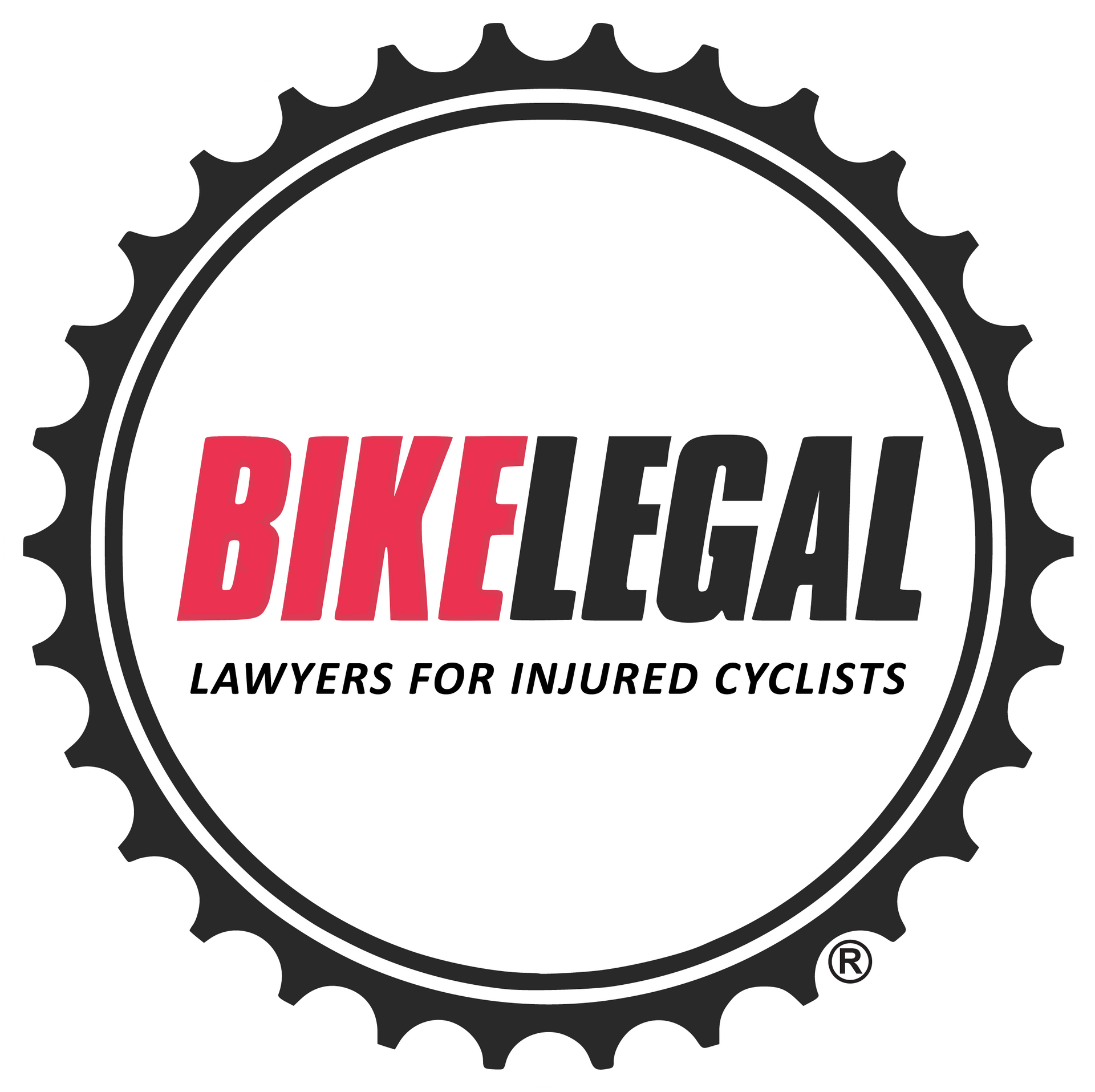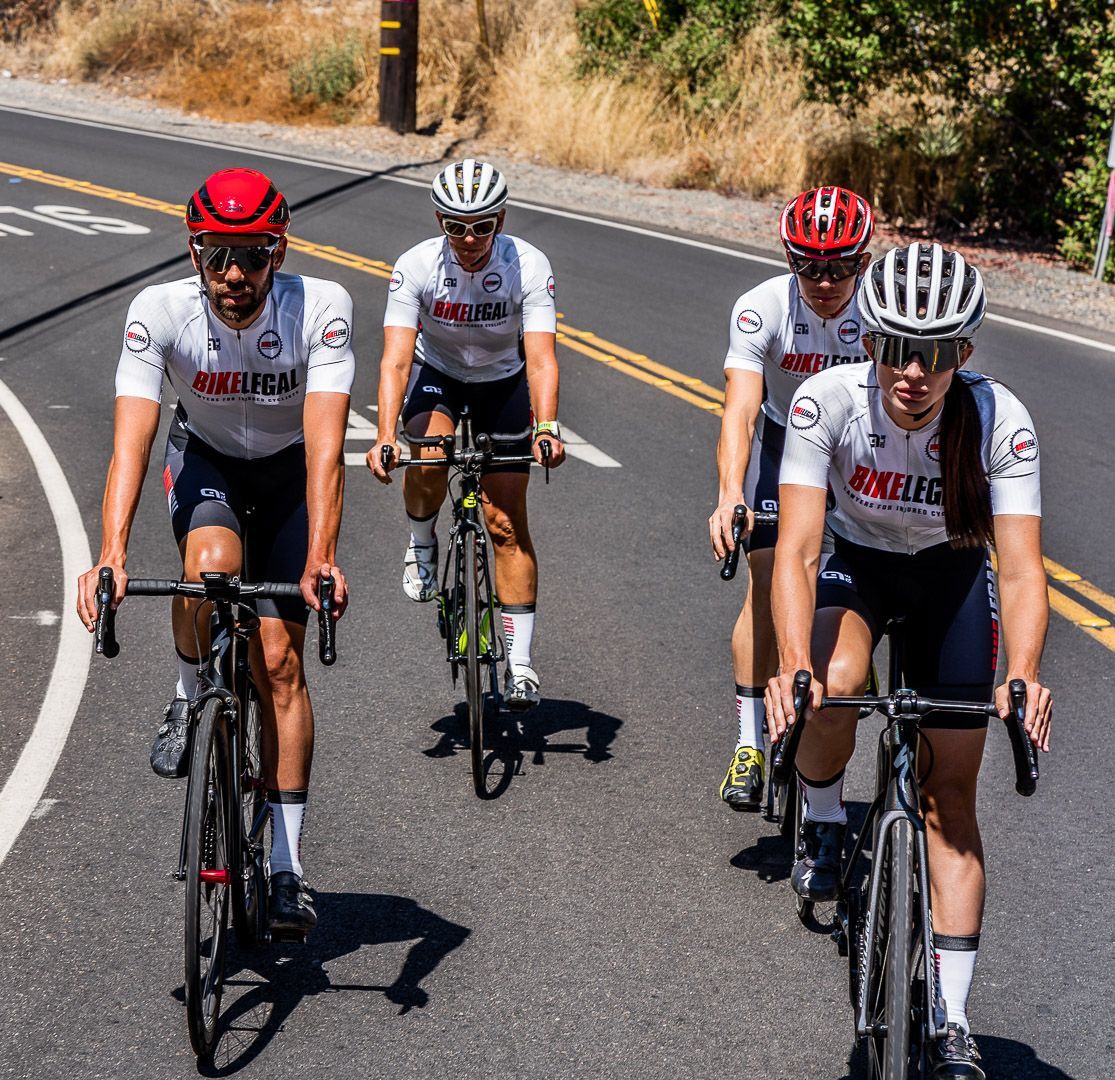How to Lock Your Bicycle Securely: A Comprehensive Guide
Follow us on
social media!
Have you ever left your bike locked up outside, only to return and find an empty space and a broken lock where it used to be? It’s a moment that leaves you feeling angry, frustrated, and unsure of what to do next.
With bike theft on the rise and thieves becoming craftier, protecting your bike has never been more important. This guide will show you how to significantly reduce the chances of your bike being stolen with effective locking techniques and smart security strategies.
Here's what we'll explore:
- Why locking your bike properly matters (hint: it's more than just preventing theft).
- The lowdown on different types of best locks to prevent bike theft and which one's right for you.
- A step-by-step guide to properly lock up your bike.
- Extra security tips to keep your bike safe, even in high-risk areas.
- How to secure those easily-snatched bike components.
- And much more.
TL;DR
- Why Locking Matters: Bike theft is a serious problem, and using a flimsy lock or locking your bike incorrectly is like asking for trouble. Invest in a good lock and use it properly to protect your ride.
- Choosing the Right Lock: U-locks are the strongest, cable locks are good for quick stops, chain locks offer flexibility, and folding locks are portable. Choose the one that best suits your needs and environment.
- Locking Like a Pro: Lock your frame AND wheels to an immovable object in a well-lit, high-traffic area. Make sure the lock is tight and positioned to deter tampering.
- Extra Security Tips: Use multiple locks, be aware of theft hotspots, consider a GPS tracker, and register your bike.
- Locking in Different Environments: Adapt your locking strategy to your surroundings. Use extra caution in high-risk areas.
- Securing Components: Don't forget to lock those quick-release wheels. Secure your accessories or take them with you.
- Tech-Enhanced Security: Smart locks and GPS trackers offer extra protection and peace of mind.
- Seasonal Strategies: Keep your lock functioning in winter weather, and stay vigilant in the summer months.
- Busting Myths: Not all locks are designed equally, and even short stops require a lock. Don't fall for common misconceptions.
Why Locking Your Bike Properly Matters

Bike theft is not just about the financial hit of replacing your ride; it's the inconvenience, the violation, and the loss of something you love.
And it's a bigger problem than you might think. In the US, a bike is stolen every 3 minutes. That's roughly 175,200 reported stolen bikes each year. But get this: some estimates suggest the actual number could be closer to 2 million annually when you factor in unreported thefts.
And with e-bikes becoming more popular, thieves are getting even more eager to snatch them up.
Common Bike Locking Mistakes to Avoid:
- Using a weak lock: A flimsy lock is like an open invitation for thieves. Invest in a high-quality U-lock or chain lock that can withstand force and cutting tools.
- Locking only the frame: Thieves can easily remove wheels and other components if you only secure the frame. Always lock both quick release wheels and any other valuable parts to an immovable object.
- Neglecting to lock components: Quick-release components like wheels, saddles, and lights are prime targets for thieves. Use locking skewers or a secondary cable lock to secure them.
- Locking in poorly lit or secluded areas: Thieves are more likely to target bikes in dark, out-of-the-way spots. Choose well-lit, high-traffic areas with designated bike racks whenever possible.
- Leaving valuables on your bike: Don't tempt thieves by leaving backpacks, cycling computers, or other valuables on your bike. Remove anything that's not essential before locking up.
Types of Bicycle Locks
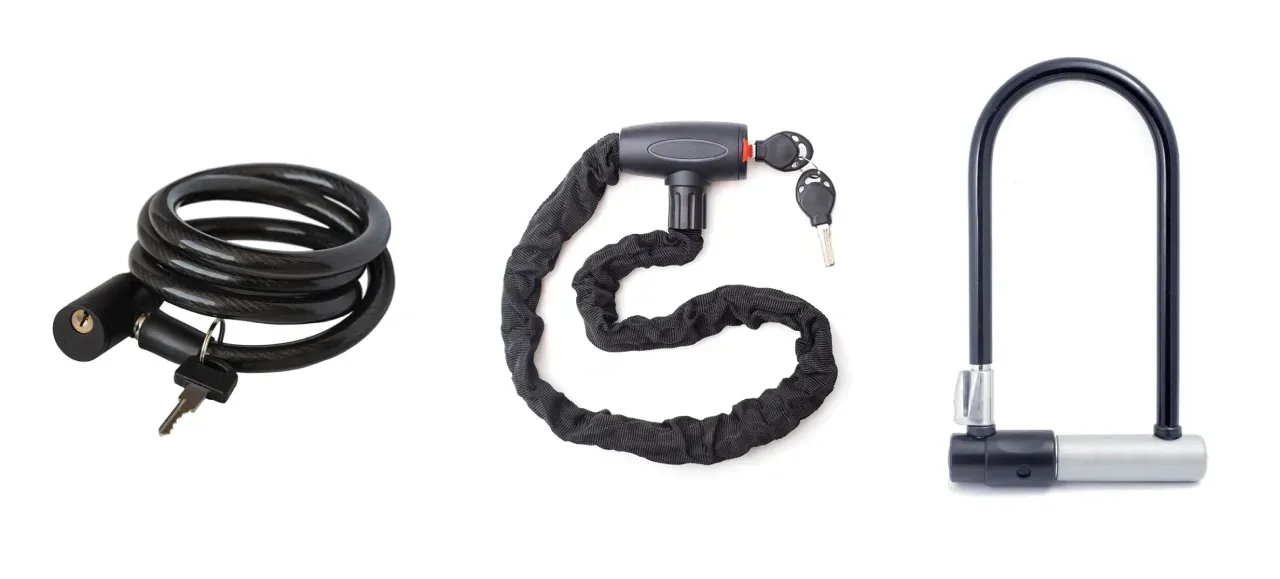
So we know a good lock is essential, but with so many options out there, how do you pick the right one? It's important to choose a lock that's right for your needs.
Here's a rundown of the most common types of bike locks:
U-locks
These are the heavy hitters of the bike lock world. They're super strong and resistant to bolt cutters, but they can be a bit bulky to carry around.
Cable locks
Lightweight and flexible, cable locks are great for quick stops or low-risk areas. However, they're not as tough as U-locks and can be cut more easily.
Chain locks
These offer a good balance of security and flexibility. They're tough to cut and can be wrapped around various objects, but they can also be heavy and cumbersome.
Folding locks
Compact and portable, folding locks offer decent security and are easier to carry than U-locks or chains. But they often come with a higher price tag.
So, which lock is right for you—U-lock vs cable lock or any other? It depends on a few factors:
- Where do you usually lock your bike? If you're in a high-theft urban area, you'll need a tougher lock than someone who lives in a quiet suburb.
- What's your bike worth? A high-end bike deserves a high-end lock. Don't skimp on security for your prized possession.
- What kind of cyclist are you? A casual rider might be fine with a lightweight cable lock, while a serious commuter might prefer a sturdy U-lock.
- How will you carry your lock? Consider how you'll transport your lock on your bike. Some secure locks come with mounts, while others can be attached to your bag or belt.
Recommended brands and models:
- Kryptonite: Known for their tough U-locks and New York Chain.
- ABUS: Offers a wide range of high-quality locks, including folding locks and chain locks.
- OnGuard: Another reputable brand with a variety of locks to choose from.
Always look for the best locks for bikes with Sold Secure or ART certifications. These indicate that the lock has been independently tested and meets high-security standards.
Not sure what lock is best for you? Learn more in our article Top 5 Best Bike Locks of 2024 & How to Choose the Right One
How to Lock Your Bike: Step-by-Step Instructions

Follow these steps to lock your bike securely and deter those pesky thieves:
Step 1: Lock the Frame
This is the most important step. Always lock your bike frame to an immovable object like a bike rack, signpost, or sturdy railing. Make sure the lock goes through the frame and the rear wheel.
- Choose a sturdy object: Avoid flimsy fences, small trees, or anything that can be easily cut or removed.
- Position the lock: Place the lock so the keyhole is facing down or towards the ground. This makes it more difficult to pick or tamper with.
Step 2: Lock Both Wheels
Don't forget about your wheels. Use a second lock (like a cable lock) to secure both wheels to the frame and/or the immovable object. This prevents thieves from simply removing the wheels and walking away with them.
- Different types of bike lock usage: Using a different type of lock for the wheels adds an extra layer of security. For example, you could use a U-lock for the frame and a cable lock for the wheels.
- Lock the quick-release levers: If your bike has quick-release levers, make sure to lock them in place. This will prevent thieves from quickly removing your wheels.
Step 3: Choose a Secure Location
Lock your bike in a well-lit, high-traffic area. Bike racks in busy public spaces are ideal. Avoid dark alleys or secluded spots where thieves can work undisturbed.
- Consider the time of day: If you're locking your bike overnight, choose a location that's well-lit and monitored by security cameras.
- Check the surroundings: Look for any potential hazards, such as overhanging branches or low-hanging wires, that could damage your bike.
Step 4: Lock to Sturdy Objects
Make sure you're locking your bike to something solid. Avoid flimsy fences, small trees, or anything that can be easily cut or removed.
Step 5: Avoid Common Pitfalls
- Keep the lock off the ground: This makes it harder for thieves to use leverage to break the lock.
- Fill the shackle: Make sure the lock is tight and there's no room for thieves to insert tools or leverage the lock open.
- Position the lock: Place the lock so the keyhole is facing down or towards the ground. This makes it more difficult to pick or tamper with.
By following these simple steps, you can significantly reduce the risk of bike theft. Remember, a little extra effort goes a long way in keeping your bike safe.
Even with the best precautions, bike theft can still happen. If it does, don't panic—follow these essential steps to take after a stolen bike incident to increase your chances of recovery.
Advanced Bike Security Tips
Want to go the extra mile to protect your bike? Here are some additional tips to keep your ride safe from those sneaky thieves:
Emerging Theft Techniques
Thieves are always coming up with new ways to steal bikes. Here are a few emerging trends to be aware of:
- Signal jamming: Thieves are using devices to jam the signals of smart locks, making it easier to bypass them. If you use a smart lock, make sure it has anti-jamming technology.
- Social media tracking: Believe it or not, thieves are using social media to track high-value bikes. Be careful about posting photos of your bike online, especially if it's expensive or unique.
Double Down on Security
Why use one lock when you can use two? Combining different types of locks—double-locking your bike (like a U-lock and a chain lock) creates a layered security system that's much harder to defeat.
Know the Hotspots: Where Bikes Get Stolen Most
Bike theft isn't random. Thieves tend to target specific areas, such as:
- Urban centers
- Areas near public transportation
- College campuses
- Apartment complexes
If you live in or frequent these areas, be extra vigilant about locking your bike securely.
GPS Trackers
GPS trackers are becoming increasingly popular among cyclists. While they can't prevent theft, they can help you locate your bike if it's stolen. Some trackers even come with built-in alarms that will notify you if your bike is being moved.
Register Your Ride
Register your bike with local authorities and online platforms like the Bike Index. This will increase your chances of recovering your bike if it's stolen. Make sure you have your bike's serial number handy.
By following these tips, you can make your bike a less appealing target for thieves and increase your chances of keeping it safe.
Locking Strategies for Different Environments

Where you lock your bike can be just as important as how you lock it. Here's a breakdown of locking strategies for different environments:
Home Sweet Home (and Work)
Ideally, you should store your bike indoors at home and work. But if that's not an option, here are a few tips:
- Use a ground anchor: These heavy-duty anchors bolt to the ground and provide a super secure point to lock your bike.
- Invest in a heavy-duty chain or U-lock: Choose a lock that's specifically designed for outdoor use and can withstand harsh weather conditions.
- Lock your bike in a well-lit area: Thieves are less likely to strike in a well-lit spot.
- Consider adding security cameras: This can deter thieves and provide evidence if your bike is stolen.
Urban vs. Suburban
The level of security you need will vary depending on whether you live in a city or the suburbs.
- Urban environments: Cities tend to have higher rates of bike theft. Use multiple locks (U-lock plus cable lock) and choose high-traffic, well-lit areas to lock your bike.
- Suburban environments: While bike theft is still a concern in the suburbs, it's generally less prevalent. Focus on locking your bike in visible locations near secure buildings or in your own yard with proper security measures.
High-Risk Areas
If you live in a high-theft area or need to lock your bike in a risky spot, take extra precautions:
- Use multiple locks: The more locks, the better. Combine a U-lock with a chain lock or a folding lock for maximum security.
- Use a GPS tracker: This can help you recover your bike if it's stolen.
- Lock your bike in a secure location: Choose a well-lit, high-traffic area with CCTV cameras if possible.
Adapting your locking strategy to your environment is key to keeping your bike safe from the bike thief.
Read Next: Explore the Top 10 Bike-Friendly US Cities for Cycling
How to Secure Bike Components
Do you think your frame and wheels are the only things thieves are after? Think again. Those smaller components can be just as tempting, especially if they're easy to remove. Here's how to keep those valuable bits and pieces safe:
Quick-Release Components
Wheels and seats with quick-release mechanisms are a thief's best friend. They can be removed in seconds, leaving you with a seriously incomplete bike. Here's how to protect them:
- Locking skewers: Replace your quick-release skewers with locking skewers. These require a key to remove, making it much harder for thieves to snatch your wheels or seat.
- Secondary cable lock: Use a secondary cable lock to secure your rear and front wheel and seat to the frame. This adds an extra layer of protection and deters opportunistic thieves.
Lights, Baskets, and Bags
Don't forget about your accessories. Lights, baskets, and bags can be easily stolen if they're not secured.
- Locks for accessories: Use small cable locks or zip ties to secure your accessories to your bike.
- Removable accessories: If possible, choose accessories that can be easily removed and taken with you when you leave your bike.
Portable Accessories
Got a fancy bike computer or a high-end water bottle cage? These portable accessories can be tempting targets for thieves.
- Secure attachments: Choose accessories that attach securely to your bike and can't be easily removed.
- Take them with you: When you leave your bike, take any valuable portable accessories with you.
By taking these extra steps to secure your bike components, you can make your bike a much less attractive target for thieves.
Smart Locks and GPS Tracking Technology
Want to add an extra layer of security to your bike? Technology can help. Here's a look at some high-tech options that can deter thieves and help you recover your bike if it's stolen:
Smart Locks
These locks are the latest innovation in bike security. These locks can be controlled via your smartphone, allowing you to lock and unlock your bike with a simple tap. Many smart locks also come with features like:
- Tamper alerts: If someone tries to mess with your lock, you'll get an alert on your phone.
- Automatic locking: Some smart locks will automatically lock when you walk away from your bike.
- Key sharing: You can share access to your lock with friends and family.
Important note: Smart locks require charging, so make sure to keep the battery topped up.
GPS Trackers: Find Your Bike, Anywhere
GPS trackers are small devices that can be attached to your bike. If your bike is stolen, you can use your phone to track its location. Some trackers even come with features like:
- Movement alerts: You'll get an alert if your bike is moved without your permission.
- Geofencing: You can set up a virtual fence around your bike, and you'll be notified if it leaves that area.
Heads up: Thieves may try to remove or disable GPS trackers, so it's a good idea to integrate them with your lock system or hide them well on your bike.
Smart Locks + GPS Trackers
Combining a smart lock with a GPS tracker gives you the ultimate peace of mind. You'll have the convenience of a smart lock with the added security of knowing you can track your bike if it's stolen. This is especially useful in high-theft areas.
With technology on your side, you can outsmart those bike thieves and keep your ride safe.
Seasonal Bike Locking Tips
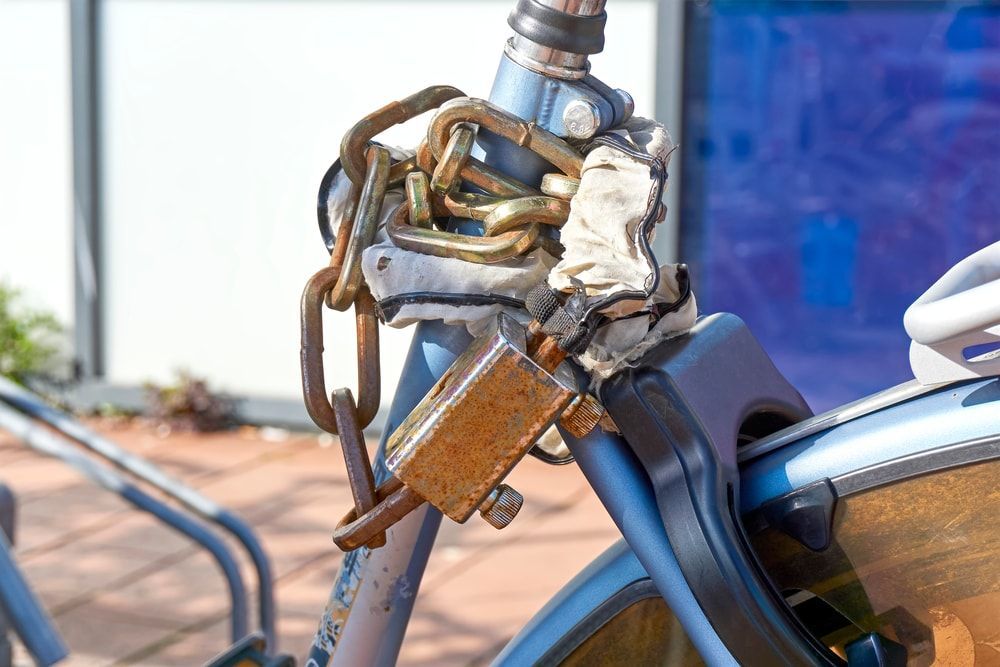
Do you think bike thieves take a break when the weather changes? Nope. They're out there all year long, rain or shine. Here's how to keep your bike safe no matter the season:
Winter Wisdom
Winter weather can be tough on your bike lock. Here's how to keep it functioning smoothly:
- Prevent freezing: Avoid placing your lock where water can accumulate and freeze. Keep a de-icer and lubricant handy in case your lock does freeze up.
- Protect against corrosion: Use a neoprene cover to protect your lock from the elements. Regularly clean and lubricate your lock to prevent rust and corrosion.
Summer Smarts
Bike theft tends to increase in the summer months when more people are out and about. Don't let your guard down, even during quick stops at parks, beaches, or outdoor cafes.
- Lock up every time: Even if you're just running into a store for a minute, always lock your bike.
- Choose secure locations: Lock your bike in well-lit, high-traffic areas.
- Be aware of your surroundings: Keep an eye out for suspicious activity.
Bike Locking Myths Debunked
We've all heard those "common sense" tips about bike security, but some of them are just plain wrong. Let's debunk some common myths about bike locks and security:
- Myth 1: Any Lock Will Do
- False! A cheap, flimsy lock is practically an invitation for thieves. They can be easily cut or broken with basic tools. Invest in a high-quality lock that's been tested and certified by reputable organizations like Sold Secure or ART.
- Myth 2: Short Stops Don't Need a Lock
- Wrong! Even if you're just running into a store for a minute, always lock your bike. Opportunistic thieves can strike in seconds. It's better to be safe than sorry.
- Myth 3: Expensive Locks Are Theft-Proof
- Sadly, no. While a high-quality lock is essential, no lock is completely theft-proof. Determined thieves with the right tools can eventually break any lock. That's why it's important to combine multiple secure bike locking methods, like using two locks, choosing secure locations, and being aware of your surroundings.
- Myth 4: "My Bike Isn't Worth Stealing"
- Think again! Thieves don't always discriminate. Even older or less expensive bikes can be targeted for parts or for quick resale. Every bike deserves to be protected.
- Myth 5: "I Live in a Safe Neighborhood"
- Don't be so sure! Bike theft can happen anywhere. Even in quiet neighborhoods, thieves can be opportunistic. It's always best to take precautions and lock your bike securely, no matter where you are.
- Myth 6: "I Can Just Chase After a Thief"
- Not recommended! Confronting a thief can be dangerous. Your safety is more important than your bike. If you see someone tampering with your bike, call the police.
By being aware of these common myths, you can make informed decisions about your bike security and reduce your risk of theft.
Buying a used bike? Don’t become an accidental victim of theft. Learn how to check if a bike is stolen before buying to protect yourself and ensure you're not purchasing stolen property.
Final Takeaways: Protect Your Ride
Securing your bike properly is more than just a precaution—it's a necessity in today’s world where bike theft is all too common. By choosing the right lock, mastering locking techniques, and staying vigilant about your bike’s security, you can significantly reduce the risk of theft. Remember, no single method is foolproof, but combining smart practices with high-quality tools can make your bike a far less appealing target. Your bicycle is more than just a mode of transportation; it’s an investment, a passion, and a part of your life. Protect it well, and you’ll enjoy many more rides.
Key takeaways on how to prevent bike theft
- Invest in a high-quality lock (or two).
- Lock your frame AND wheels to an immovable object.
- Choose well-lit, high-traffic areas.
- Be aware of your surroundings and potential theft hotspots.
- Consider using technology like smart locks and GPS trackers.
Ride Protected. Ride Safe, with BIKE LEGAL
At Bike Legal, we’re cyclists representing cyclists. With unmatched expertise in bicycle accident law and a deep understanding of cycling, we fight to secure justice and fair compensation for injured riders. Beyond legal representation, we’re passionate advocates for bicycle safety and education. Contact us today for a free consultation.
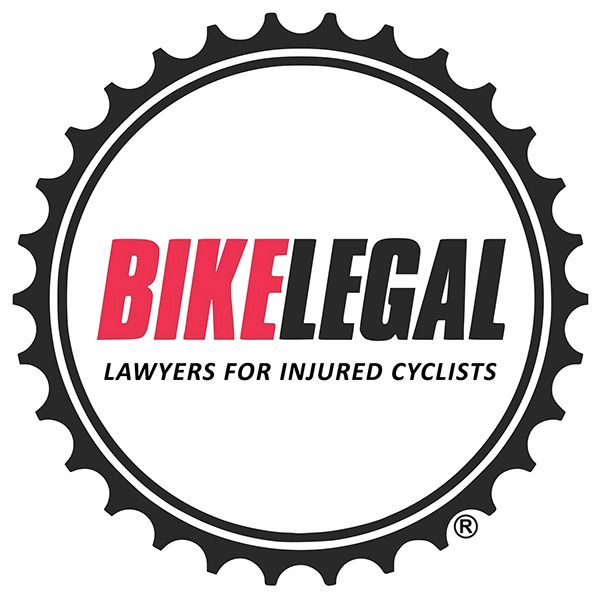
FAQs
What is the most secure way to lock a bike?
The best way to lock a bike is to use a combination of high-quality locks, such as a U-lock and a chain lock, to secure both the frame and wheels to an immovable object in a well-lit, high-traffic area.
How do you lock your bike correctly?
Always lock the rear triangle frame to an immovable object, such as a bike rack or sturdy railing. Use a second lock to secure both wheels to the frame and/or the immovable object. Choose a well-lit, high-traffic area with designated bike racks, and make sure the lock is tight and positioned to make it difficult for thieves to tamper with.
How to lock a bike wheel so it doesn't get stolen?
While no method is foolproof, combining multiple security measures significantly reduces the risk of theft. Use high-quality locks, proper safe ways to lock your bicycle, and GPS trackers, and choose secure environments. Register your bike with local authorities and online platforms, and be aware of your surroundings and potential theft hotspots.
What are you allowed to lock your bike to?
It's generally acceptable to lock your bike to designated bike racks, signposts, and sturdy railings. Avoid locking your bike to trees, fences, or anything that can be easily cut or removed. Be mindful of local regulations and avoid obstructing pedestrian walkways or building entrances.
What if my bike gets stolen even though I locked it properly?
Even with the best security measures, bike theft can still happen. If your bike is stolen, report it to the police immediately and provide them with your bike's serial number and any other relevant information. Follow these steps: What to Do If Your Bicycle Gets Stolen.
